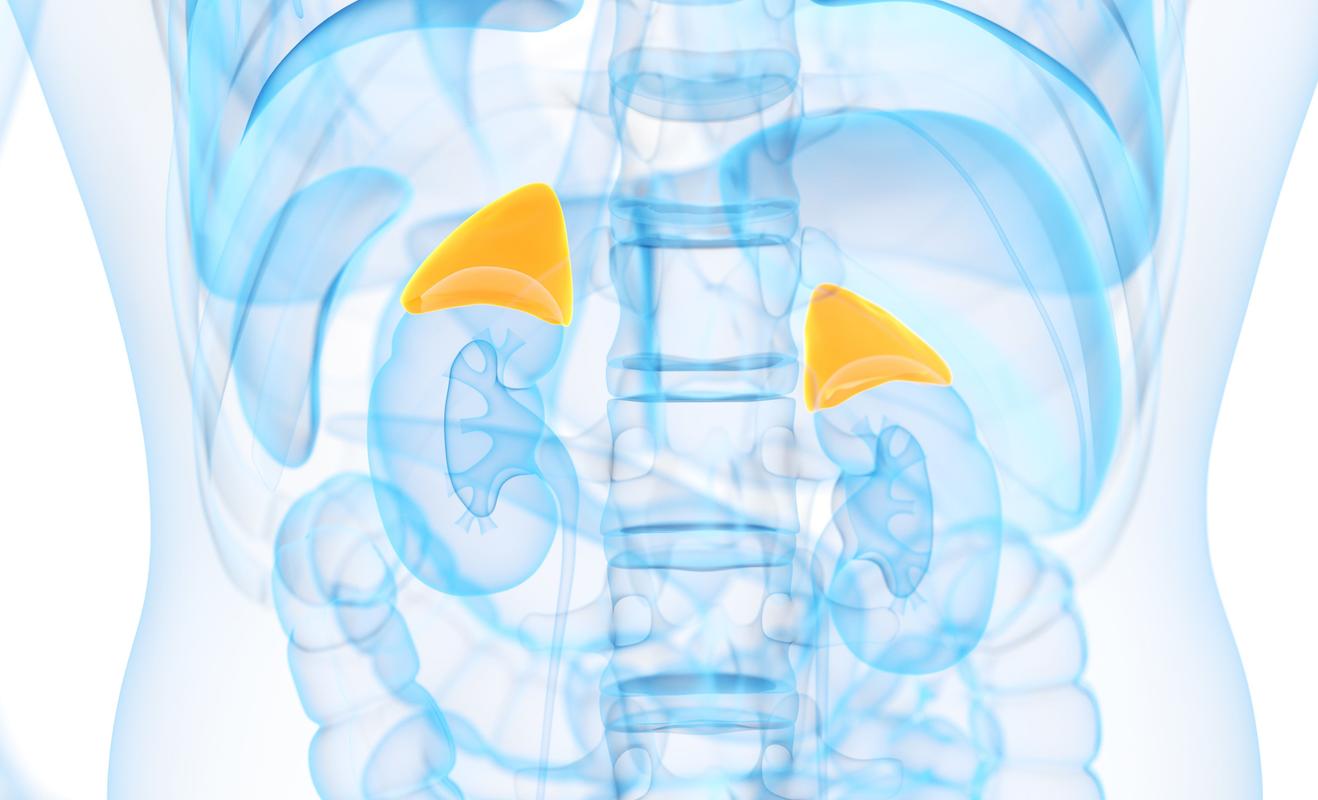For rare disorders, such as tumours of the adrenal gland, the treatment can consist of surgical removal of one or both adrenal glands. The adrenal glands are located left and right above the kidneys, in the area behind the abdominal cavity (the retroperitoneum). Usually removal is done with keyhole surgery with small incisions in the abdominal wall (laparoscopy). During this procedure; the surgery has to carefully get past the other abdominal organs. Some patients do not qualify for keyhole surgery, e.g. because they've had to undergo complex abdominal surgery in the past. In which case, surgery has to be performed via open access (larger abdominal incisions).
An alternative technique bypasses this problem by approaching the adrenal glands via the back. The patient lies on his stomach and keyhole surgery is done via small incisions in the back, giving the surgeon direct access to the location of the adrenal glands. This technique has recently become an addition to the existing surgical range at UZ Leuven. Four patients have already undergone this type of surgery and they are all doing well.
Less painful and quicker recovery
Dr. Thomas Douchy, oncological surgeon: “The alternative technique is, just like classic keyhole surgery, minimally invasive, but with the main advantage that it is less painful for the patient afterwards, and a smoother recovery process In contrast to procedures via the abdominal cavity, there are for instance no limitations on lifting heavy things, which means that people with a physical profession can pick up their job more quickly.”
The big advantage of the alternative technique is that patients experience less pain afterwards, and recover more quickly.Dr. Thomas Douchy, oncological surgeon at UZ Leuven
In case both adrenal glands have to be removed, the technique has the additional advantage that surgeons can simulaneously operate on both sides. What's more, the patient doesn't have to be turned from one side to the other during the procedure, as is the case during classic keyhole surgery.
Not for everyone
Not all patients qualify for this new technique. “Sometimes the lesion in the adrenal gland is such that classic keyhole surgery or open surgery is most appropriate. The main thing is that we now have more options in our surgical range to better tailor the procedure to the needs of every individual patient”, dr. Douchy concludes.
We now have more options in our surgical range and are able to better tailor the procedure to the needs of each individual patient.Dr. Thomas Douchy, oncological surgeon at UZ Leuven
More information about adrenal surgery
The adrenal gland is a small organ located on both sides of the body, right above each kidney. The adrenal glands produce various hormones, including adrenalin and steroids, which fulfill crucial functions in our body. Removing the adrenal gland(s) or part of it can be recommended as treatment for benign or malignant tumours, or in case of over-production in the adrenal gland.
As the largest Belgian centre for adrenal gland surgery, UZ Leuven performs annually 30 to 35 surgical removals of the adrenal gland. It is in part because of this high number that doctors were given the opportunity to learn alternative techniques, which would be more beneficial for certain patients.
The recently added technique is called ‘Posterior Retroperitoneoscopic Adrenalectomy’ (PRA) and is an addition to two other types of procedure to remove the adrenal gland: laparoscopy (keyhole surgery via the abdomen) and open surgery (with a larger abdominal incision). Just like the other procedures, PRA is reimbursed by the health insurance fund.



